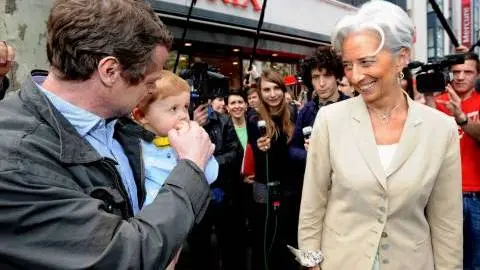US data contradictions make life tricky for the Fed
After September’s 50bp rate cut, the Federal Reserve is likely to move more cautiously from now on. Official data suggests strong growth and robust employment gains, but survey evidence indicates the situation isn’t as rosy and caution is warranted. We still favour the soft landing scenario amid cooling inflation fears and the Fed cutting rates to 3.5%
No regrets from the Fed
In the wake of the strong September jobs report, we have been asked on a number of occasions whether the Federal Reserve is regretting its decision to cut the Fed funds target rate by 50bp last month, especially when the economy is growing 3%, equity markets are at all-time highs and inflation remains above target. We don’t think so. We characterise the 50bp cut as a risk mitigation move as policymakers seek to optimise the monetary policy stance for its differing policy goals. In this regard, better month-on-month inflation prints have given the Fed the confidence to start putting more emphasis on its other targets of maximum employment and making sure the majority of households feel the benefits of economic growth.
After all, not all of the data is so positive. It is difficult to square the robustness of the jobs report with survey evidence that painted a much bleaker picture of hiring intentions while the Fed’s own Beige Book survey has suggested a clear cooling in the labour market this year. Perhaps more significantly, households are noticing that jobs are much harder to get – as reported by the Conference Board – and are changing their behaviour, with the proportion of workers quitting their jobs to move to a new employer collapsing over the past 12 months.
With full-time employment continuing to fall and with the knowledge that the Bureau for Labor Statistics has structurally overestimated job creation by a third over the past 18 months, we think the Fed will be wary of putting too much emphasis on those September jobs figures. Note too that the October jobs report will be published on 1 November, ahead of the next FOMC meeting and the election – and could influence the outcome of both.
Workers feel a shift in the jobs market before it shows up in the unemployment rate

Increasing consumer caution set to see rates heading towards neutral
Another issue for the Fed is the bifurcation of the consumer and the Fed’s challenge of ensuring that the maximum number of people in America feel the benefits of economic growth. Higher-income households continue to spend strongly given inflation is an irritation rather than a constraint on purchasing power, surging equity and property prices have boosted wealth and ongoing high interest rates are generating significant income from money market funds. However, it is a very different story for middle and lower-income households. There, we are seeing more stress with rising loan delinquencies and falling savings highlighting the pain many are facing. If we overlay a growing sense of unease about job security, which could make consumers retrench, it again makes sense for the Fed to loosen monetary conditions gradually to try and offer some relief from the financial pressures in an environment where inflation is seen as less threatening.
We believe the Fed is looking to replicate the success of the 1995 loosening cycle directed by Alan Greenspan, which achieved a soft landing with inflation returning to target. The jobs report, firm consumer spending data and better ISM survey readings merely suggest that the Fed will switch back to 25bp incremental cuts in coming months rather than repeating September’s 50bp move. We continue to look for the Fed funds rate to bottom at 3.25-3.5% by next summer.
Soft landing with election providing two way risks
We subscribe to the soft landing thesis, but the impending election also poses risks to both the upside and the downside. A clean result with a smooth political transition to the new president will provide clarity and help support sentiment — and in a lower interest rate environment, it could improve economic prospects. If Donald Trump becomes president, lower taxes may support the growth story a little more than Kamala Harris’s policies of higher taxes, with higher spending for specific groups. Trump’s policy mix also increases inflation concerns given the threat of tariffs, so if he wins, the Fed may take the view that rates don’t need to be cut as far as the 3% level the market is currently pricing. The Fed may feel that it has greater scope to cut rates if Harris wins, but it is likely to be marginal.
However, if this is an election and transition that sees significant tensions and a sense of unease among households and businesses that leads to weaker growth and rising unemployment, the pressure on the Fed to act more aggressively will be intense.
This publication has been prepared by ING solely for information purposes irrespective of a particular user's means, financial situation or investment objectives. The information does not constitute investment recommendation, and nor is it investment, legal or tax advice or an offer or solicitation to purchase or sell any financial instrument. Read more
Download
Download article
10 October 2024
ING Monthly: Central bankers left holding the baby This bundle contains 14 Articles